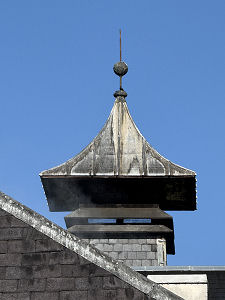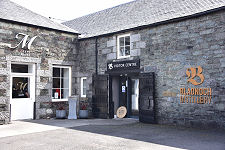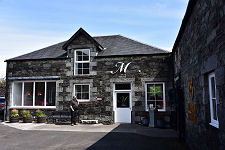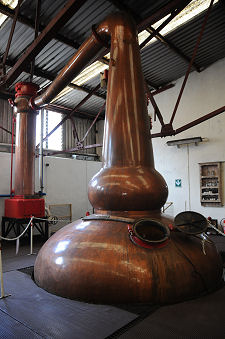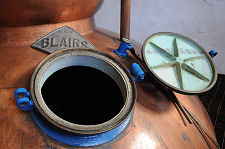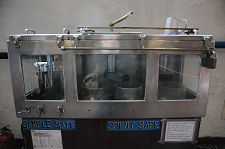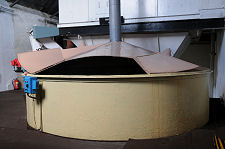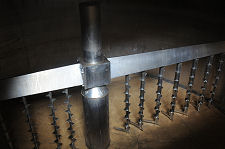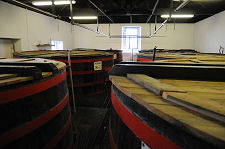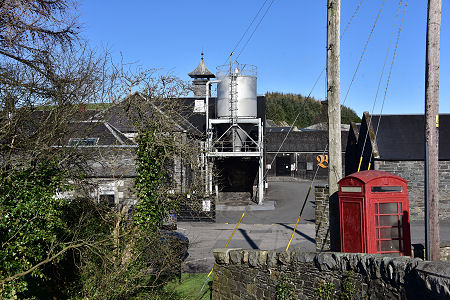 Bladnoch Distillery Seen from the Bridge |
Bladnoch Distillery stands on the north bank of the River Bladnoch in the village of Bladnoch, a mile south-west of Wigtown. With a latitude that places it level with Carlisle and Sunderland in England it is Scotland's most southerly whisky distillery. Its setting is beautiful and it looks especially good when viewed from the road that climbs up the far side of the valley of the River Bladnoch, with the Galloway Hills in the background.
You begin your visit to Bladnoch Distillery in the attractive reception area. From the reception area a doorway leads through to a large and exceptionally well stocked gift shop. Those taking the distillery tour begin in a room dominated by a well designed display showing how the distilling process works, while next door is a small museum of artefacts from Bladnoch Distillery's past. You can find out more about Making Malt Whisky from our series of feature pages showing the stages in the process. (Continues below images...)
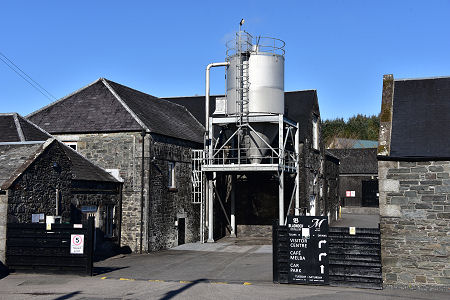 Bladnoch Distillery Post-Refurbishment |
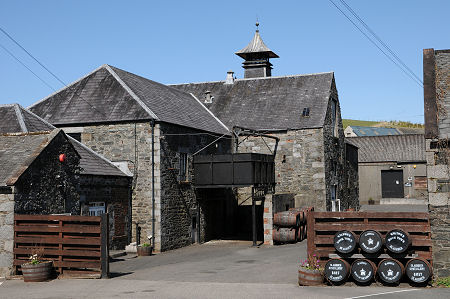 Bladnoch Distillery Pre-Refurbishment |
Bladnoch Distillery was founded in 1817 by John and Thomas McClelland. Initial production of some 7,000 gallons or 25,000 litres per year had risen to 51,000 gallons (nearly 200,000 litres) per year by the late 1880s. During retrenchment of the industry in the 1890s, Bladnoch survived to become Dumfries and Galloway's only distillery. Bladnoch closed at the beginning of World War Two, though its maltings continued in operation until 1949. The distillery reopened in 1957 and subsequently passed through a number of hands before being closed by its then owners in 1993.
Small-scale distilling subsequently took place at times at Bladnoch but it was only after it passed into new ownership in 2015 and was extensively refubished that it resumed large scale operation.
The distillery itself is as charmingly original as they come. There have, of course, been many changes over the years, but they are far from obvious and you get the sense of somewhere very timeless. Bladnoch Distillery, like most distilleries these days, buys in its malted barley. It has, however, retained the iconic pagoda which once sat on top of the kiln that would have rounded off the malting process.
As you wander around the distillery it is easy to believe that what you are looking at would have been readily recognised by Alfred Barnard, an author who visited the distillery (and most others in Scotland) between 1885 and 1887. Much of his entry on the distillery is given over to the difficult 10 hour train journey from Edinburgh to Wigtown, and a description of Wigtown itself. But his descriptions of the malting houses and kilns are fascinating, as is his reference to the water wheel that provided the motive power for much of the distillery's operations. The mill lade runs from a weir a mile upstream on the River Bladnoch and remains important today as the source of the distillery's water, as the River Bladnoch here is tidal.
The distillery contains all the elements you would expect, plus a few you might not. The tour gives a more detailed view than usual of the milling process, while a surprise in the still room is a spirit safe made, very unusually, of stainless steel rather than brass. When we visited it was also possible to see a set of gates surmounted by a sign which proclaimed the "Isle of Ronansay Distillery, Established 1897". This was a result of Bladnoch Distillery's role as the Isle of Ronansay Distillery, in the BBC drama series 2000 Acres of Sky, filmed in the area between 2000 and 2003.
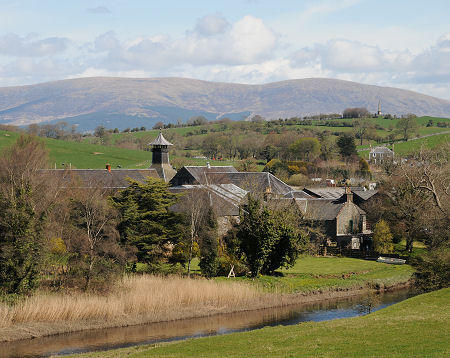 Bladnoch Distillery with the River Bladnoch in the Foreground and the Galloway Hills in the Distance |
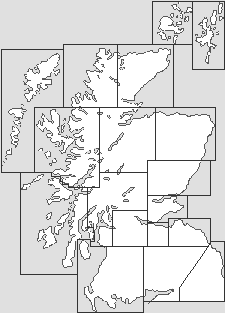
|
|
|
Visitor InformationView Location on MapBladnoch, Wigtown, DG8 9AB. Tel: 01988 402605. info@bladnoch.com www.bladnoch.com Opening Hours Tours & Admission What3Words Location: ///quiz.defrost.means |
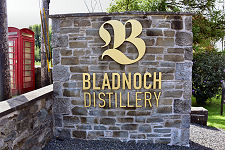 Welcome Sign |
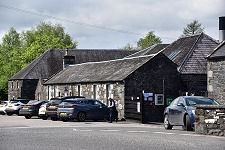 Another View of the Distillery |
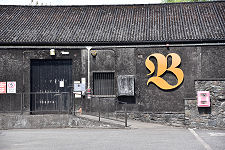 Bonded Warehouse |
 Bladnoch Single Malt on Sale |
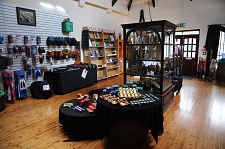 The Gift Shop |
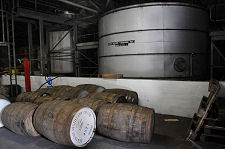 Filling the Casks |
 Bonded Warehouse |
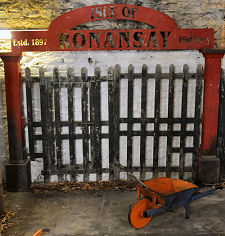 Isle of Ronansay Distillery Gates |
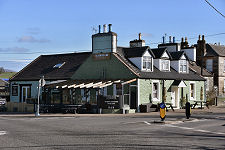 The Bladnoch Inn |
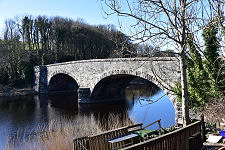 River Bladnoch and Bridge Gates |
